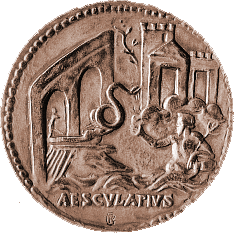The Associations instituted
to aid the History Museum collect pertinent
historic and cultural material, cultivate
relations with other cultural associations,
coordinate kindred international initiatives,
publish books and papers, and in short act like
the "nervous system" of the museum
organism.
For some time we have been compiling data banks
for the complete chronology, bibliography and
iconography of the Tiber Island, mapping and
illustrating its fascinating history over two
thousand years.
We have collected as well a considerable body of
books, prints, paintings and photographs concerning Tiber Island.
Despite eighteen years of efforts accepted by the
City of Rome, the municipality, confronted by
private and special interests, has not succeeded
in freeing Palazzo Pierleoni Caetani, its own
property, designated seat of the museum, except
for the installation of the Documentation Center.
The
following brief summary gives the salient facts
concerning the destiny of the ancient Palazzo
Pierleoni Caetani, classified national monument
that sums up two thousand years of the history of
Tiber Island.
After 1870 when the
national forces of united Italy seized Rome from
the Pope, the Franciscan monks who acquired the
Palazzo in the 17th century were expropriated.
The building became the property of the city of
Rome and the upper floors were let for ninety
years to the Roman Jewish Hospital.
11 March 1986. The Hospital having
abandoned the Tiber Island for a new building in
the suburbs, the City Council votes to designate
Palazzo Pierleoni Caetani as a museum in the
context of the recovery plan for Tiber Island.
15 March 1988. During delays in the
implementation of the museum project, the Jewish
Hospital reoccupies the upper floors without
title and installs various offices and an
outpatient facility.
19 March 1992. The municipal
administration denounces the owner of an enclave
of private property on the ground floor (acquired
in competition with the City of Rome) for
carrying out unauthorized construction in a
classified monument.
19 February 1996. The
administration orders the branch of the Jewish
Hospital to leave Palazzo Pierleoni Caetani and
pay some three billion lire in back rent. The
mayor, motu proprio, suspends the eviction.
1996 The Italian museum association
recommends the transfer of the health facility to
a larger space in the nearby Via del Portico d'Ottavia,
main street of the former Ghetto.
1996 Some $3.000.000 is allocated for the
restoring of Palazzo Pierleoni Caetani out of the
funds for the Church's Jubilee Year of 2000.
Although the palace has been destined to be the
Tiber Island History Museum, the money is
earmarked for the outpatient facility under the
heading of Hospitality for the Jubilee.
1996 Codacons, the consumer organization,
sues the administration for improper use of
Jubilee funds. Suit pending.
3 December 1996. Codacons denounces the
owner of a portion of the ground floor for real
estate speculation on a classified monument when
he puts the property up for sale. The
administration does not renew its efforts to
expropriate the enclave.
19 December 1996. The anti-museum
lobby in the City Council drafts deliberation to
remove the Tiber Island History Museum from Tiber
Island. The administration requests the museum
associations to support a move to transfer the
seat of the museum to spaces the associations had
proposed for the outpatient clinic.
5 February 1997. A question is raised in the
European Parliament concerning the abuse of an
Italian national monument- the Palazzo Pierleoni
Caetani- which is part of the Heritage of
Humanity with the rest of the center of Rome.
4 March 1997. The same question is raised
in the City Council.
1997 Codacons, the Fondazione Caetani and
the Italian museum Association take the case to
the administrative courts. Decision Pending.
|
